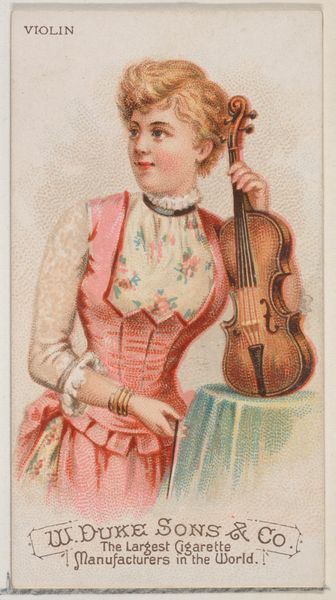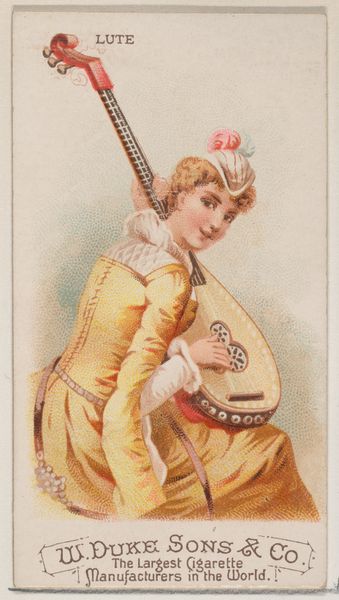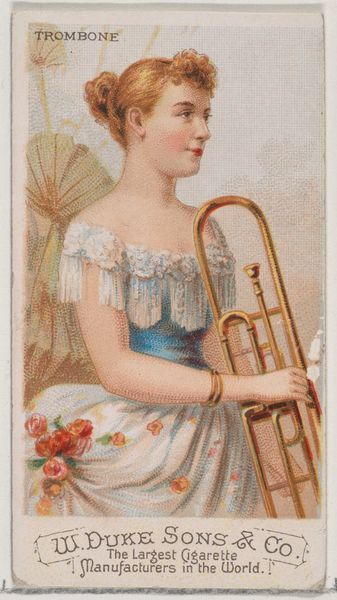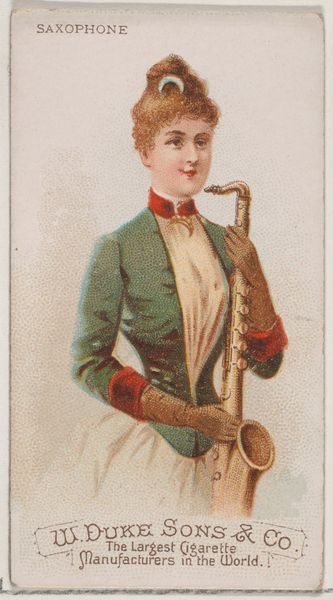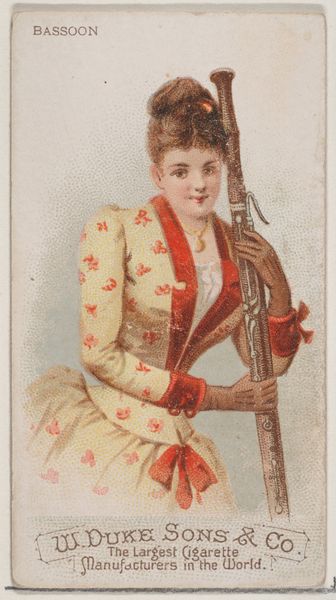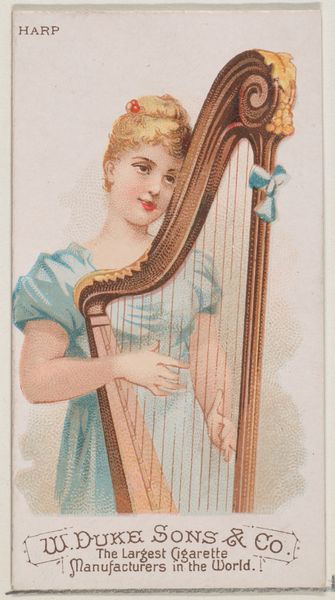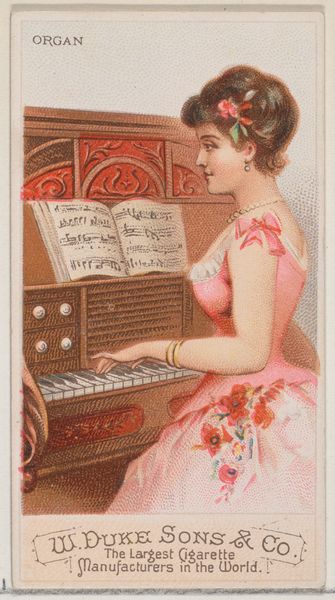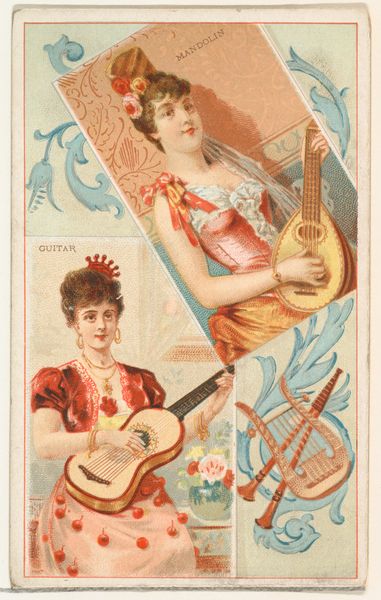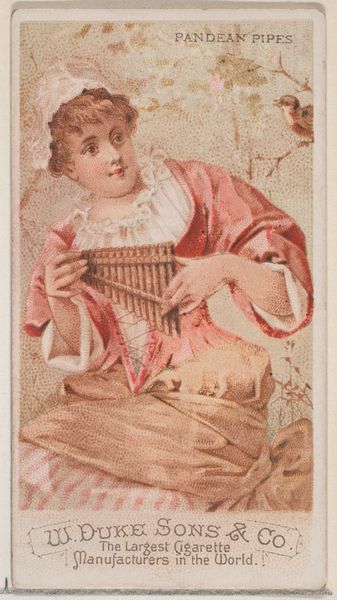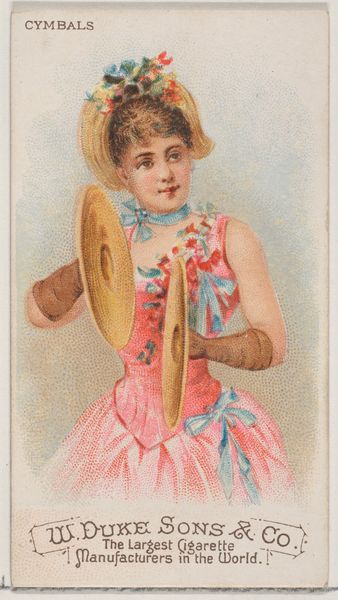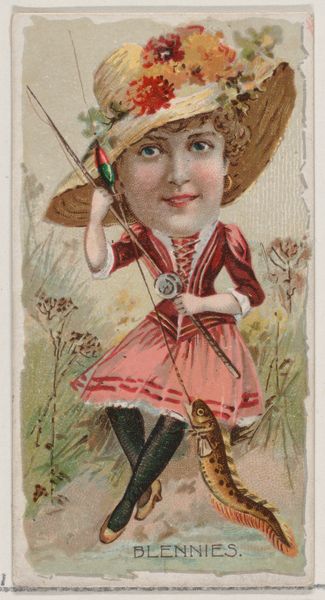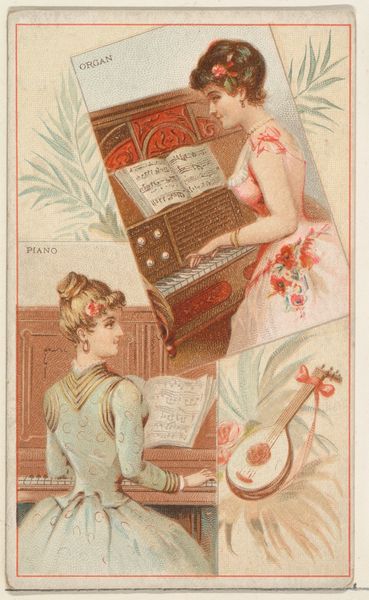
Cello, from the Musical Instruments series (N82) for Duke brand cigarettes 1888
0:00
0:00
drawing, print
#
portrait
#
drawing
#
art-nouveau
# print
#
caricature
#
portrait reference
#
portrait drawing
#
genre-painting
Dimensions: Sheet: 2 3/4 x 1 1/2 in. (7 x 3.8 cm)
Copyright: Public Domain
This is "Cello, from the Musical Instruments series," a trade card made by W. Duke, Sons & Co. sometime between 1870 and 1920. These cards, distributed with Duke brand cigarettes, offer a glimpse into the cultural values of the Gilded Age. At first glance, we see a young, white woman elegantly posed with a cello. But consider this image in the context of its time: mass production and advertising were on the rise, targeting an increasingly diverse consumer base. Representations of women like this one were carefully constructed to sell not just cigarettes, but also aspirations of refinement and social status. The cello, historically associated with European aristocracy, is here divorced from its traditional context, becoming a symbol of accessible luxury. It speaks to the complex interplay between consumerism, gender, and class in shaping cultural identities. What does it mean to commodify art and associate it with personal identity?
Comments
No comments
Be the first to comment and join the conversation on the ultimate creative platform.
